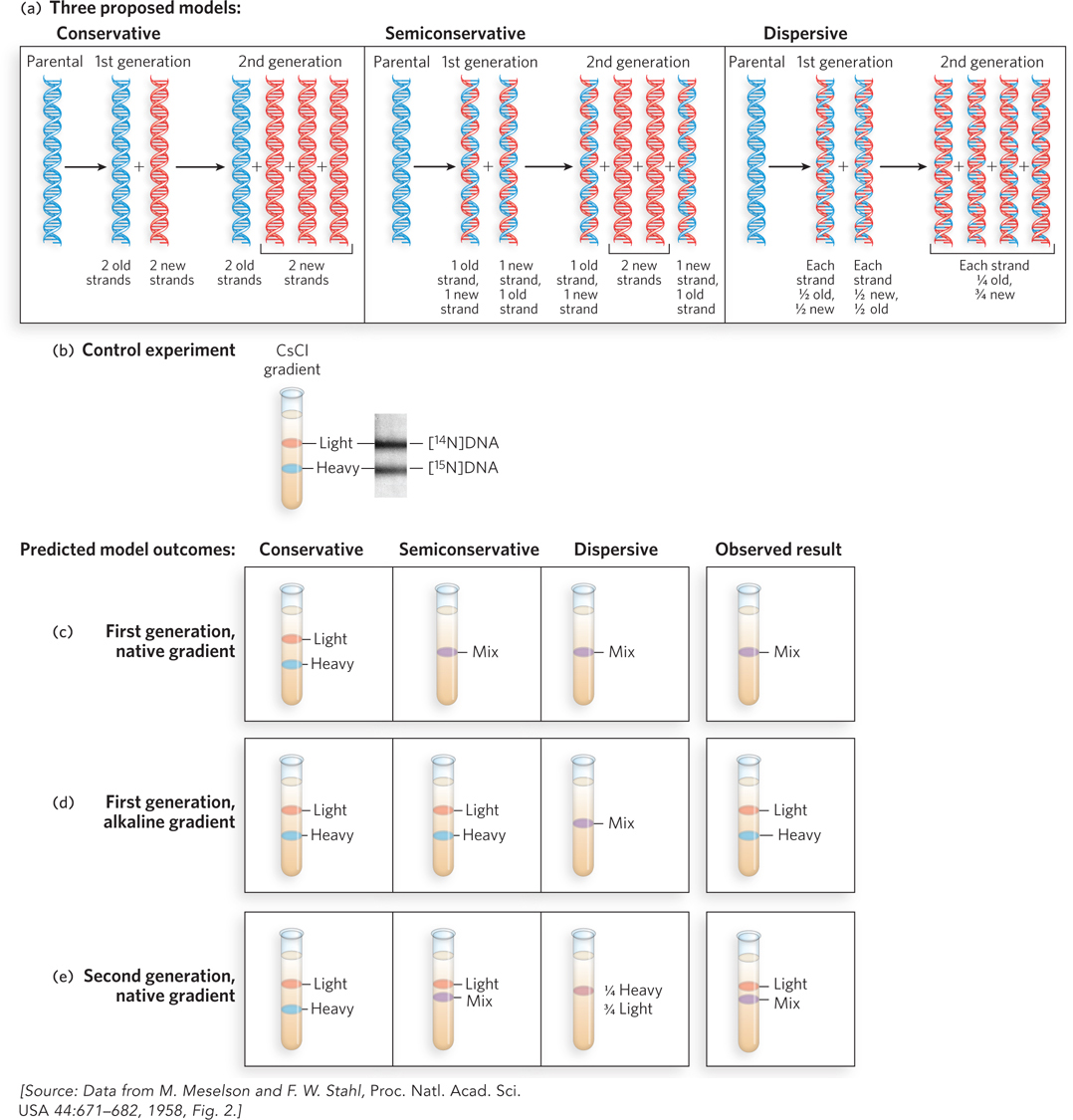
Semiconservative DNA replication. (a) Three possible mechanisms of replication, and the distribution of parental DNA (blue) and daughter DNA (red) expected for each, after one and two generations of growth. (b) In one of Meselson and Stahl’s control experiments, equal amounts of double- e-